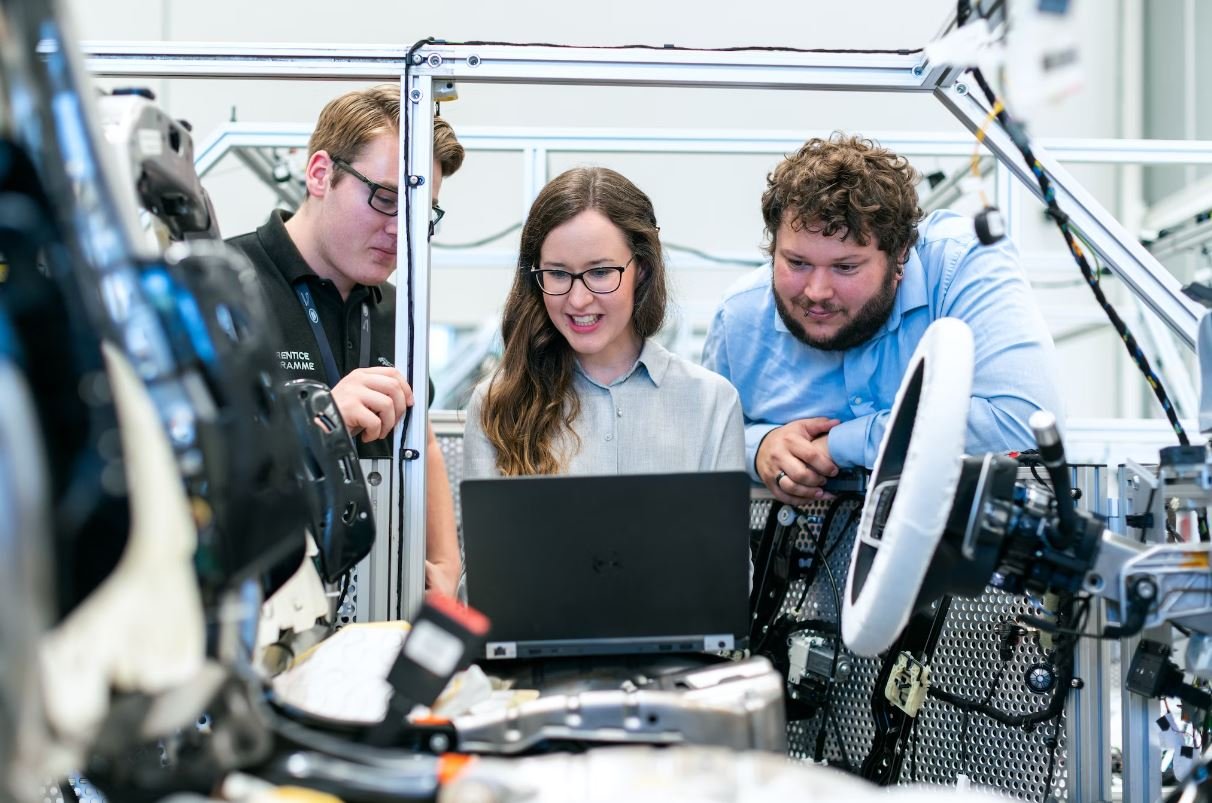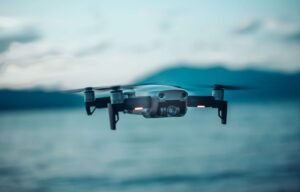How Does TikTok Use AI?
With over 2 billion downloads worldwide, TikTok has become one of the most popular social media platforms in recent years. But have you ever wondered how it manages to provide such engaging and personalized content to its users? The answer lies in Artificial Intelligence (AI) and machine learning algorithms that power the platform.
Key Takeaways:
- TikTok utilizes AI and machine learning algorithms to create a personalized user experience.
- AI is used for content recommendations, video editing, and AR effects.
- Machine learning algorithms analyze user behavior to deliver relevant and engaging content.
**AI** plays a crucial role in the success of TikTok. It helps **recommend** content to users, enables advanced **video editing** capabilities, and offers interactive **AR effects** that enhance the user experience.
When it comes to content recommendations, TikTok’s AI employs a **combination of factors**. It takes into account the user’s **watch history**, **likes**, **engagement**, and other **behavior patterns** to suggest videos tailored to their interests. This intelligent algorithm learns from user interactions and delivers an ever-improving content stream, ensuring users stay hooked to the platform.
*TikTok’s AI learns from your behavior to create a personalized feed.*
Video editing on TikTok is made easier through AI. The platform has an **automatic video editing feature** that applies filters, effects, and transitions with just a single tap. This AI-powered tool saves time for users while enhancing the quality and creativity of their videos.
*With one tap, TikTok’s AI applies professional-grade video edits to your content.*
| AR Effect | Usage | Engagement |
|---|---|---|
| Face Filters | Allows users to add fun filters to their faces. | High engagement due to the viral nature of creative filters. |
| Background Effects | Enables users to change the background of their videos. | Creates visually appealing and immersive content. |
| Object Tracking | Tracks and interacts with specific objects in a video. | Creates interactive and dynamic video experiences. |
TikTok also provides a variety of **AR effects** that users can apply to their videos. These effects, powered by AI, make videos more engaging and interactive. From face filters to background effects and object tracking, these effects allow users to create captivating content with ease.
*TikTok’s AI-powered AR effects add a touch of magic to your videos.*
Overall, TikTok’s use of AI enhances the user experience by providing engaging and personalized content. Through its AI-powered recommendations, video editing capabilities, and AR effects, TikTok keeps users entertained and coming back for more.
Tables:
| Stat | Value |
|---|---|
| Total Downloads | 2 billion |
| Active Users | 500 million |
| Time Spent per Day | 52 minutes |
| Age Group | Percentage |
|---|---|
| 13-17 | 32% |
| 18-24 | 29% |
| 25-34 | 16% |
| 35-44 | 12% |
| 45+ | 11% |
| Country | Percentage of Users |
|---|---|
| China | 24% |
| India | 22% |
| United States | 10% |
| Indonesia | 5% |
| Others | 39% |
TikTok’s innovative use of AI has revolutionized the way we consume and create content. As the platform continues to grow and evolve, we can expect even more exciting AI-driven features to enhance our TikTok experience.

Common Misconceptions
Misconception 1: TikTok is solely powered by AI
A common misconception about TikTok is that the entire platform operates solely on artificial intelligence. While AI plays a significant role in recommended content and video editing features, it is not the sole driving force behind the app.
- TikTok utilizes AI algorithms to analyze user preferences and behavior to recommend personalized content.
- Human moderation is still necessary to maintain community guidelines and ensure user safety.
- The social aspect of TikTok relies on human interaction and engagement rather than AI.
Misconception 2: TikTok AI can read your mind
Another common misconception is that TikTok’s AI can read users’ minds and predict what type of content they want to see. While the AI algorithms are powerful in curating relevant content, they are not capable of deciphering individual thoughts or desires with absolute certainty.
- TikTok’s AI analyzes user behavior, including likes, comments, and watch time, to identify patterns and suggest similar content.
- AI algorithms learn from user feedback but do not have access to users’ private thoughts or emotions.
- Occasionally, the AI may misinterpret user preferences, leading to recommendations that are not aligned with their actual interests.
Misconception 3: TikTok’s AI is infallible
There is a common misconception that TikTok’s AI is infallible and always provides accurate recommendations and filters out harmful content. However, like any AI system, it is not perfect and can have its limitations.
- AI algorithms can be biased or make mistakes, leading to unexpected or inaccurate recommendations.
- While TikTok employs measures to mitigate harmful content, some inappropriate or misleading videos may still slip through the AI moderation.
- The AI relies on available data and can struggle to understand nuances or cultural context, sometimes resulting in content inaccurately categorized.
Misconception 4: AI-powered effects are flawless
Many people assume that the AI-powered visual effects on TikTok are flawless and always produce perfect results. However, the reality is that AI effects have their limitations and can sometimes fall short of users’ expectations.
- TikTok’s AI effects heavily rely on available data and may not work as well for certain user demographics or ethnicities.
- The accuracy and quality of AI effects can vary based on the lighting conditions and the complexity of the background in videos.
- Some AI effects may unintentionally distort or alter videos in unexpected ways, leading to unintended or undesirable outcomes.
Misconception 5: TikTok’s AI is designed to manipulate users
There is a misconception that TikTok’s AI is intentionally designed to manipulate users’ behavior and attention to keep them hooked on the platform. While TikTok’s algorithms are optimized for user engagement, the intention is not necessarily manipulative.
- AI algorithms aim to deliver content that users find interesting and engaging, increasing the likelihood of continued usage.
- TikTok also offers various content filtering and time management tools to help users maintain a healthy online experience.
- The use of AI is primarily for enhancing user experience and personalization rather than malicious manipulation.

Introduction
TikTok, the popular short-form video platform, has taken the world by storm with its addictive content and algorithm-driven personalized recommendations. Behind the scenes, TikTok utilizes artificial intelligence (AI) to enhance user experience and optimize content discovery. This article explores ten fascinating aspects of how TikTok uses AI, revealing the innovative technology behind the app’s success.
1. User Behavior Analysis
TikTok harnesses AI to analyze user behavior patterns, such as likes, comments, and interactions, to generate personalized video recommendations. By examining an individual’s behavior, TikTok’s AI algorithm adapts content delivery, creating a highly engaging experience for each user.
2. Facial Recognition
One of TikTok’s AI features is advanced facial recognition technology. This allows users to apply creative filters, special effects, and augmented reality (AR) filters that respond to facial movements, transforming ordinary videos into captivating visual experiences.
3. Object Detection
Powered by AI, TikTok’s object detection feature allows the app to identify objects within a video. This functionality enables the app to suggest relevant hashtags, stickers, and effects, helping users enhance their videos effortlessly.
4. Speech Recognition
TikTok leverages AI-powered speech recognition to automatically generate captions and subtitles for videos. This feature enhances accessibility and allows users to engage with content, even when sound is not permitted or available.
5. Emotion Recognition
Utilizing AI, TikTok’s emotion recognition technology analyzes facial expressions, gestures, and voice tones to detect emotions. This information is used to curate more emotionally captivating content, increasing user engagement and satisfaction.
6. Content Moderation
TikTok utilizes AI algorithms to enforce community guidelines and policies effectively. Through automated content moderation, the app can detect and remove inappropriate or harmful content, ensuring a safe and positive environment for users.
7. Predictive Text Suggestions
By employing AI-powered predictive text suggestions, TikTok streamlines the caption and comment creation process. The app’s AI algorithm suggests and completes text input based on the video’s content, enabling users to express themselves effortlessly.
8. Music Recognition
TikTok employs AI to recognize and match music tracks to user-generated videos. This allows users to create synchronized lip-syncing or dance videos easily, as the app identifies the specific make and model of the song being used.
9. Content Aware Video Editing
TikTok’s AI-driven content-aware video editing feature automatically analyzes and enhances video clips. Using AI algorithms, the app improves video quality, adjusts brightness and contrast, and suggests filters to help users create visually stunning videos.
10. Real-Time Object Tracking
Through AI-powered real-time object tracking, TikTok enables users to seamlessly integrate visual effects with moving objects. Whether it’s adding virtual elements to a person or following a specific object’s path, TikTok’s AI tracks and enhances videos in real-time.
Conclusion
TikTok’s success can be attributed, in great part, to its incorporation of AI technologies. From personalized video recommendations to content moderation and video editing, TikTok’s AI algorithms enrich the user experience, making it a highly addictive and engaging platform. By leveraging AI, TikTok continues to push the boundaries of social media innovation, captivating users worldwide with its creative and immersive content.
Frequently Asked Questions
How does TikTok utilize AI technology?
TikTok leverages AI algorithms to power several features on its platform, including personalized content recommendations, video editing tools, and content moderation.
What role does AI play in TikTok’s content recommendations?
AI plays a crucial role in analyzing user preferences, engagement patterns, and browsing history to suggest relevant and personalized content to users, enhancing their overall TikTok experience.
Does TikTok use AI for video editing?
Yes, TikTok utilizes AI-powered video editing tools to enhance user-generated content. These tools allow users to apply filters, add effects, and create engaging multimedia content with ease.
How does TikTok employ AI for content moderation?
TikTok employs AI algorithms to detect and remove inappropriate or harmful content from its platform. These algorithms continuously analyze and scan user-generated content for violations of community guidelines, ensuring a safe and enjoyable online environment.
Can AI detect and filter out fake or manipulated content on TikTok?
While TikTok utilizes AI techniques to identify and remove fake or manipulated content, the effectiveness may vary. AI algorithms can detect certain patterns and anomalies, but it is an ongoing challenge to stay ahead of the evolving methods used for content manipulation.
What measures does TikTok take to protect user privacy in relation to AI?
TikTok prioritizes user privacy and takes several measures to safeguard personal data. These include stringent data protection policies, anonymization techniques in AI processing, and user-controlled privacy settings to manage data sharing and visibility.
How does AI help TikTok in providing real-time video effects and filters?
AI technologies enable TikTok to offer real-time video effects and filters by leveraging computer vision algorithms. These algorithms track facial features and other visual elements to apply dynamic effects, enhancing the visual experience for users.
Does TikTok use AI for its “For You” page recommendations?
Yes, TikTok heavily relies on AI algorithms for its “For You” page recommendations. These algorithms analyze user interactions, such as likes, comments, and shares, combined with AI-based content analysis to curate a tailored feed of videos for each user.
Can AI help detect and prevent cyberbullying on TikTok?
TikTok uses AI tools to identify and mitigate instances of cyberbullying. These tools analyze user interactions, text content, and audiovisual cues to detect language or behavior indicative of cyberbullying, allowing for prompt intervention and addressing potential issues.
How does TikTok ensure transparency and accountability in its AI systems?
TikTok strives to maintain transparency and accountability in its AI systems by conducting regular audits, employing diverse teams of experts in AI ethics, and providing clear guidelines and policies for AI development and deployment. Additionally, TikTok actively seeks user feedback and encourages responsible AI use.




